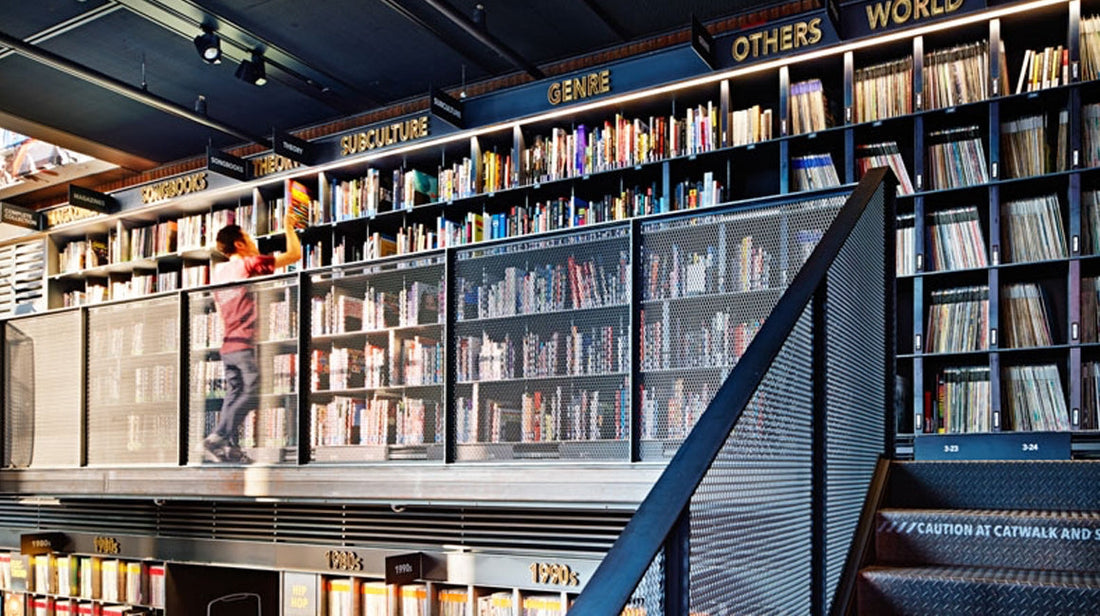
🎼 How Music Libraries Really Work (And How to Get Noticed)
Share
You’ve probably heard that getting your music into a sync licensing library is one of the easiest ways to start earning placements. And it’s true—music libraries are the backbone of the sync industry, serving as searchable catalogs where supervisors, editors, producers, and agencies source music for TV shows, commercials, trailers, podcasts, and digital content.
But what most artists don’t know is how these libraries actually work behind the scenes—or what it takes to stand out in a sea of submissions.
In this post, we’re pulling back the curtain on how music libraries function in 2025 and giving you a playbook to get noticed, get placed, and get paid.
🧠 What Is a Music Library?
A music library is a curated collection of licensable music available for commercial use in media. There are two major types:
1. Production Music Libraries (PMAs & Non-PMAs)
- Curated, usually exclusive
- Used in TV, film, ads, trailers
- Examples: Audio Network, APM, Universal Production Music, Megatrax
2. Royalty-Free / Micro-Licensing Libraries
- Non-exclusive, subscription-based or pay-per-use
- Popular in YouTube, podcasting, indie projects
- Examples: Artlist, Epidemic Sound, AudioJungle, Soundstripe
Each type has different audiences, payout structures, and quality thresholds—but both rely on searchability and metadata to help decision-makers find the right track fast.
⚙️ How Do Music Libraries Actually Work?
🔍 1. Clients Search by Keywords
Music supervisors don’t browse for fun—they search with specific terms like:
- "uplifting indie rock 60s-inspired"
- "dark ambient underscore tension"
- "playful ukulele 30 seconds"
If your track isn’t properly tagged with moods, instruments, energy, genre, and structure, it won’t even show up—no matter how good it sounds.
✅ Pro Tip: Use simple, searchable language. Avoid poetic or abstract terms.
🧰 2. Curators or A&Rs Review Submissions
Most high-end libraries have a team of A&Rs or curators who decide what gets accepted. They assess:
- Audio quality and production value
- Licensing viability (no samples, clean rights)
- Commercial usability (genre fit, edit-friendliness)
If your track has a great hook but is unstructured, uncleared, or lacks alternate mixes—it will likely be rejected.
📈 3. Tracks Get Prioritized by Usage or Curation
Just because you're “in the library” doesn’t mean your song is actively shown to clients. Many libraries:
- Push curated tracks to editors
- Rank tracks based on prior usage or download history
- Highlight staff picks or editorial playlists
This means your metadata, popularity, and relationship with the library team all influence discoverability.
🎯 How to Get Noticed (and Get Licensed)
1. Focus on Utility, Not Just Artistry
Ask yourself: Where could this track be used?
Create tracks with a clear emotional tone and purpose:
- Tension cues for reality TV
- Quirky jingles for YouTube ads
- Emotional piano for docuseries
2. Offer Stems and Edits Upfront
Supervisors love flexibility. Always upload:
- Instrumental versions
- 15-sec, 30-sec, and 60-sec edits
- No drums or no lead vocal mixes
- Stems (when allowed)
3. Nail Your Metadata
Tag accurately using:
- Mood: energetic, sad, nostalgic, corporate
- Genre/Subgenre: indie pop, trap, acoustic folk
- Instrumentation: strings, synth, vocal chops
- BPM/Key: especially for editors syncing cuts
Use tools like DISCO, Soundminer, or even spreadsheets to organize everything.
4. Be Proactive with Communication
Introduce yourself to the A&R or submissions team (if allowed). Ask what they’re currently looking for. Pitch specific cues that match trends or client requests.
🚫 Never send bulk Dropbox folders with no context.
5. Start with Smaller Libraries or Niche Catalogs
You don’t need to land Audio Network out of the gate. Instead:
- Pitch to boutique catalogs
- Focus on niche platforms (sports, trailers, reality TV)
- Use early wins to build social proof
6. Be Consistent, Not a One-Hit Wonder
Top earners in libraries don’t just submit one cue—they submit dozens, optimized for different use cases. Build a mini-catalog that covers multiple moods, genres, and formats.
💵 How Do You Get Paid?
It depends on the platform:
🔸 Production Libraries
- Upfront sync fee + backend performance royalties (from PROs)
- Revenue splits (often 50/50)
- Some exclusive deals offer upfront buyouts
🔸 Royalty-Free Libraries
- Flat license fees or subscription revenue shares
- Typically non-exclusive
- Some offer monthly payouts based on downloads
📢 Always read the contract—especially regarding exclusivity, reversion clauses, and payment schedules.
🚀 Final Thoughts
Music libraries aren’t just passive marketplaces—they’re search-driven ecosystems built around structure, strategy, and relationships. If your track is easy to find, fits a need, and makes the editor’s job easier, you’ve already won half the battle.
Getting in is just step one. Getting noticed—and licensed—requires clarity, professionalism, and music that solves creative problems for others.
Want to get your catalog library-ready?
We offer sync audits, stem prep, and metadata clean-up.
👉 Work with us and make your tracks stand out.
